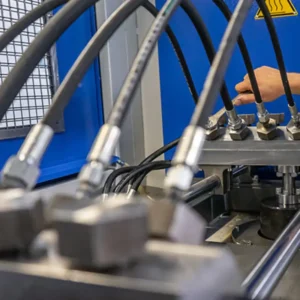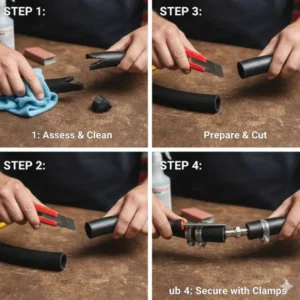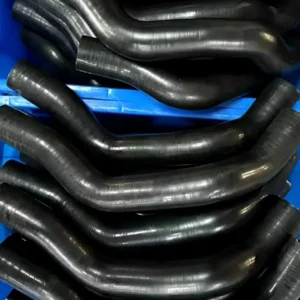When we think of hoses, many of us picture a simple rubber tube. But in the world of industrial and hydraulic applications, things get a lot more complex. This is where the textile braided hose comes into play. It’s a key component in countless systems, from agricultural machinery to automotive fluid lines. We’ll explore what makes these hoses unique, what they’re made of, and why they might be the perfect choice for your next project.
What Is A Textile Braided Hose?
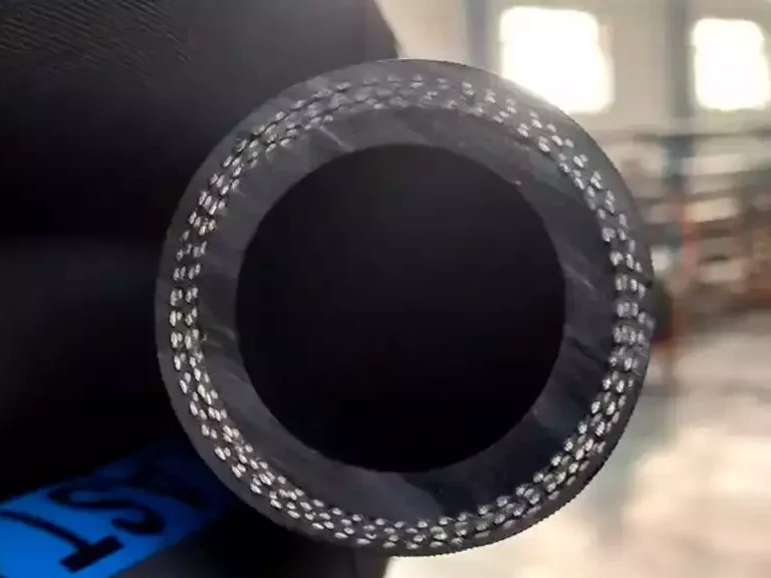
At its core, a textile braided hose is a type of flexible conduit reinforced with a woven textile material. Unlike standard rubber hoses, it has a layered construction designed for enhanced performance. The innermost layer, or tube, is typically made from a synthetic rubber that is compatible with the fluid being transferred.
Surrounding this inner tube is the reinforcement layer, a tightly braided web of textile fibers like rayon, nylon, or polyester. This reinforcement is then covered by an outer layer, or cover, that protects the hose from external factors.
How Are Textile Braided Hoses Made?
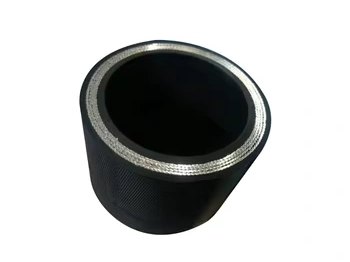
The manufacturing process of a textile braided hose is a fascinating display of engineering precision. It’s this careful construction that gives the hose its unique properties. We start with the inner tube, which is formed through an extrusion process. This creates a seamless, durable channel for the fluid. Next, the magic happens on a braiding machine, where the textile fibers are woven around the inner tube in a precise, interlocking pattern.
This braiding process is crucial because it gives the hose its tensile strength and resistance to pressure. Finally, the outer cover is applied to protect the braided layer from environmental damage, abrasion, and other external threats. The hose is then cured or vulcanized to bond the layers together into a single, cohesive unit.
Textile Braided vs. Wire Braided Hydraulic Hose
The debate between textile braided vs. wire braided hydraulic hose is a common one, and the right choice depends on the specific demands of your application. While both are used to transfer fluids under pressure, their construction and performance characteristics are quite different. We’ve found that the key distinction lies in the reinforcement material.
| Feature | Textile Braided Hose | Wire Braided Hose |
| Reinforcement | Woven fabric (nylon, polyester, rayon) | Steel wire |
| Pressure Rating | Low to medium pressure | High to very high pressure |
| Flexibility | Extremely flexible, with a small bend radius | Less flexible and more rigid |
| Weight | Lightweight | Heavy |
| Abrasion Resistance | Good | Excellent (especially with a robust outer cover) |
| Cost | Generally more cost-effective | More expensive due to materials and manufacturing |
| Kinking Resistance | Excellent | Good |
| Common Use | Low-pressure return lines, air and water systems, automotive fluid lines | Heavy machinery, hydraulics, industrial equipment |
If your application requires handling extreme pressure, a wire braided hose is the clear winner. However, for applications where flexibility and weight are critical, the textile braided hose is often the superior choice.
Benefits of Textile Braided Hoses
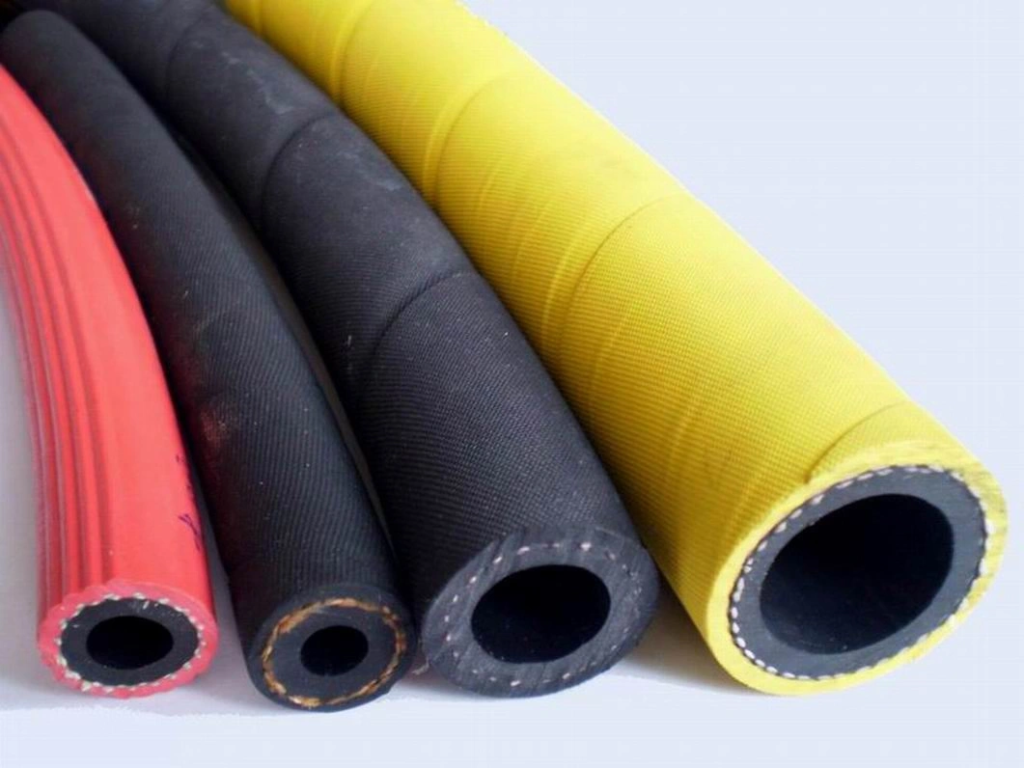
There are several compelling reasons why a textile braided hose might be the best option for your project. Their unique construction provides a range of benefits that we believe make them stand out in the hose market.
- Exceptional Flexibility: The woven textile reinforcement gives these hoses a natural flexibility that allows for tight routing in confined spaces. This is a huge advantage in applications with complex layouts.
- Lightweight Design: Compared to their wire-reinforced counterparts, textile braided hoses are significantly lighter. This makes them easier to handle, transport, and install, which can reduce labor costs and improve efficiency.
- Cost-Effectiveness: For many low-to-medium-pressure applications, a textile braided hose provides a perfect balance of performance and price. They offer the necessary durability without the higher cost associated with steel reinforcement.
- Resistance to Kinking: The braided structure provides a strong, resilient framework that resists kinking and crushing. This ensures consistent flow and prolongs the life of the hose.
- Abrasion and Weather Resistance: With a strong outer cover, textile braided hoses are designed to withstand abrasion from rubbing against other components and to resist degradation from exposure to weather, ozone, and sunlight.
Common Applications of Textile Braided Hoses
From simple fluid transfer to critical system components, textile braided hoses are incredibly versatile. We’ve seen them used in a wide range of industries where their specific benefits are highly valued. Their adaptability and reliable performance make them an ideal choice for a wide range of applications.
- Automotive: They are widely used for fuel lines, power steering fluid lines, and transmission oil cooler lines. Their flexibility and resistance to hydrocarbons make them ideal for these engine bay applications.
- Industrial: In industrial settings, they serve as return lines for hydraulic systems, low-pressure air lines, and for transferring water, coolant, and other non-corrosive fluids.
- Agriculture and Construction: We often see these hoses on agricultural machinery and light construction equipment, where they are used for low-pressure hydraulic systems and pneumatic controls.
- General Purpose: For everyday tasks, a textile braided hose is an excellent choice for air compressors, sprayers, and other general-purpose fluid transfer applications where flexibility and durability are needed.
Choosing the Right Textile Braided Hose
Selecting the right hose can feel overwhelming, but by following a few simple steps, you can ensure you get the perfect fit for your needs. We always recommend considering a few key factors to make an informed decision. First and foremost, you must prioritize the pressure rating by choosing a hose that exceeds the maximum working pressure of your system.
Verify fluid compatibility, as the inner tube material must be able to safely handle the fluid it will carry. It is also crucial to check the temperature range to ensure the hose can operate safely in both the minimum and maximum temperatures of your application. The hose size is equally important—the inner diameter (ID) affects flow rate, while the outer diameter (OD) is crucial for fitting into confined spaces.
Consider the external environment and choose an outer cover that can withstand abrasion, UV light, or chemicals. By carefully evaluating these points, you can confidently select the perfect textile braided hose for your project, ensuring both safety and performance.
Frequently Asked Questions
- Q: Can a textile braided hose be used for high-pressure applications?
- A: No, textile braided hoses are generally rated for low to medium pressure. For high-pressure applications, we strongly recommend using a wire-braided hydraulic hose.
- Q: Are textile braided hoses resistant to chemicals?
- A: The chemical resistance depends on the material of the inner tube and the outer cover. Always check the manufacturer’s specifications to ensure compatibility with your fluid.
- Q: How can I tell if a textile braided hose is damaged?
- A: Look for visible signs like cracking, blistering, kinks, or a soft, spongy feel. A damaged hose can be a safety hazard and should be replaced.
Conclusion
The textile braided hose is a workhorse of modern fluid transfer systems, offering an ideal blend of flexibility, durability, and cost-effectiveness for a wide range of applications. We hope this guide has provided you with a clear understanding of what these hoses are, their key benefits, and how to choose and care for them properly. By selecting the right hose for the job, you can ensure the safety, efficiency, and longevity of your equipment.

